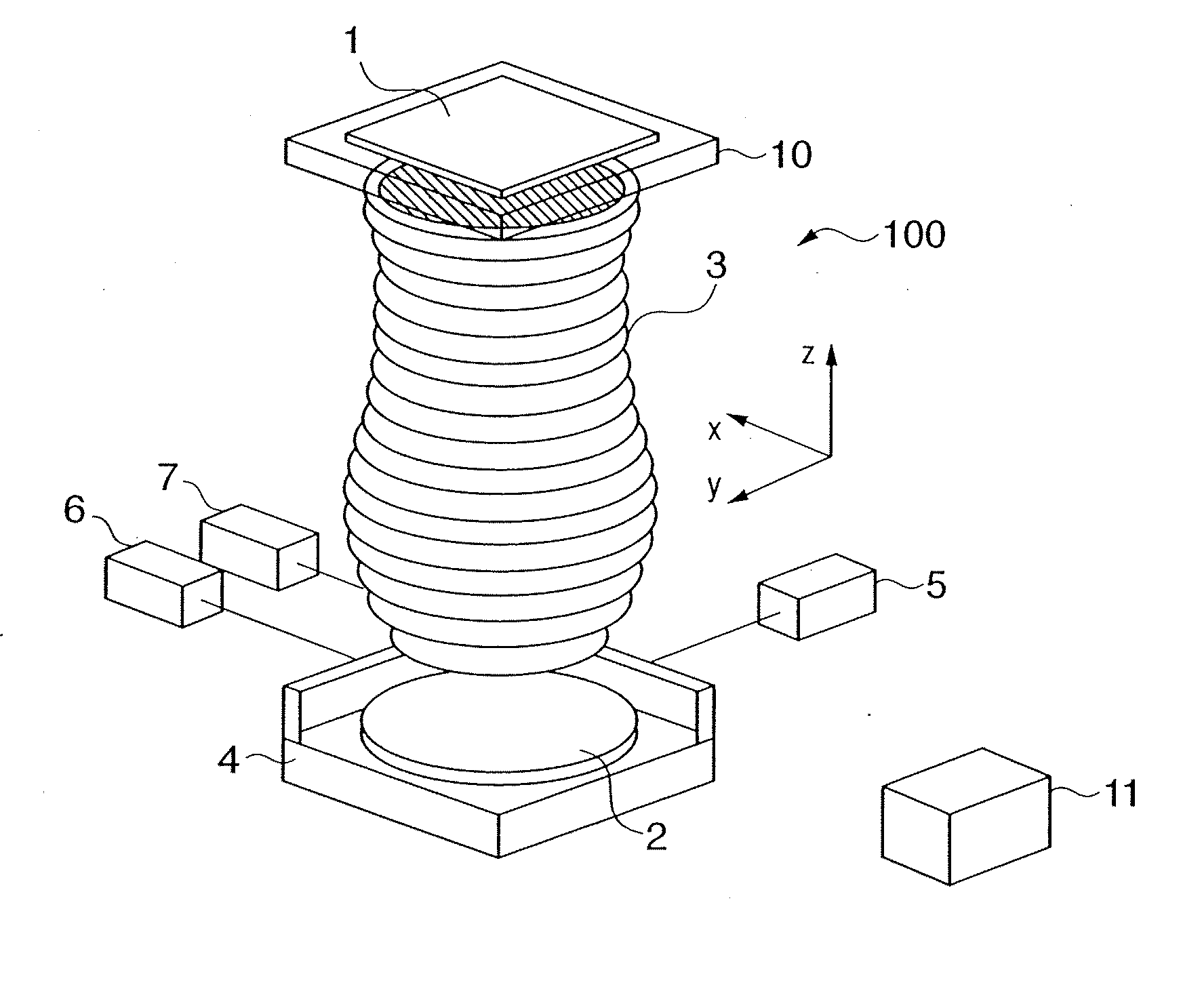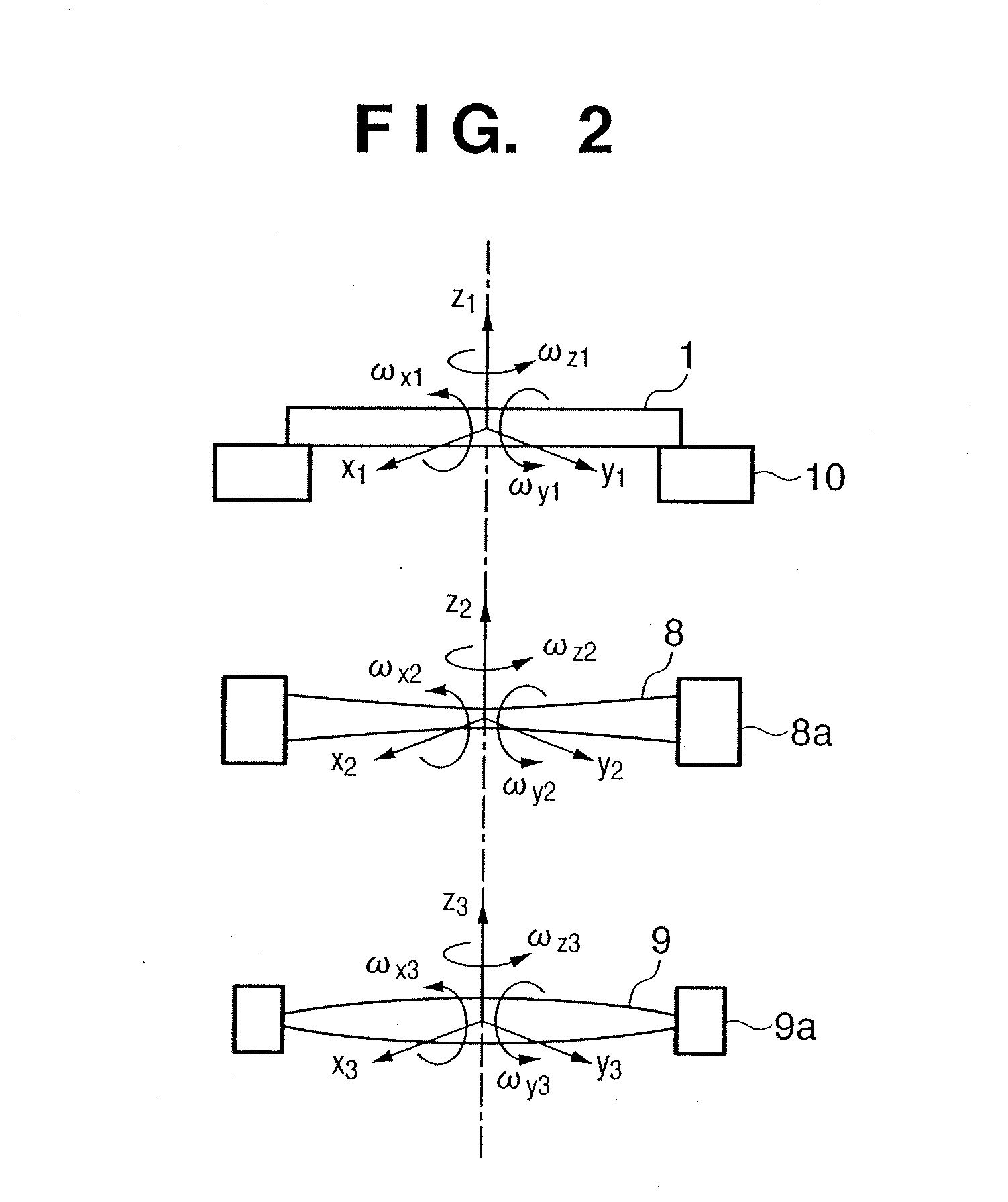Optical apparatus, method of determining position of optical element in optical system, and device manufacturing method
a technology of optical elements and optical apparatuses, applied in the direction of photomechanical apparatuses, instruments, optical elements, etc., can solve the problems of inability to calculate optimal adjustment amounts for various aberrations, and the change in wavefront aberration, one of the most important aberrations, cannot be expressed
- Summary
- Abstract
- Description
- Claims
- Application Information
AI Technical Summary
Benefits of technology
Problems solved by technology
Method used
Image
Examples
first embodiment
[0030]FIG. 3 is a flowchart for explaining automatic adjustment of a projection optical system 3 according to the Automatic adjustment is controlled by a control unit 11. A block 101 executes a process of measuring the wavefront aberration of the projection optical system 3. A block 102 expands the wavefront aberration by J Zernike orthogonal functions for image heights at H points to obtain Zernike coefficients Zjh.
[0031] A block 103 calculates aberration amounts from the optical design values of the projection optical system 3, and obtains main aberration amounts of N types (e.g., coma, curvature of field, astigmatism, distortion, and telecentricity) for evaluating the projection optical system 3 for image heights at H points. A block 104 accumulates pieces of information obtained by the blocks 101 to 103. As shown in FIG. 5, the aberration amount can be given as a wavelength value.
[0032] A block 105 divides the aberration amounts by an allowance and normalizes them in order to ...
second embodiment
[0067]FIG. 4 is a flowchart for explaining automatic adjustment of a projection optical system 3 according to the Automatic adjustment is controlled by a control unit 11. A block 101 executes a process of measuring the wavefront aberration of the projection optical system 3. A block 102 expands the wavefront aberration by J Zernike orthogonal functions for image heights at H points to obtain Zernike coefficients Zjh.
[0068] A block 103 calculates aberration amounts from the optical design values of the projection optical system 3, and obtains main aberration amounts of N types (e.g., coma, curvature of field, astigmatism, distortion, and telecentricity) for evaluating the projection optical system 3 for image heights at H points. A block 104 accumulates pieces of information obtained by the blocks 101 to 103.
[0069] A block 105 divides the aberration amounts by an allowance, normalizes them, and obtains normalized evaluation values (normalized aberration amounts) in order to optimiz...
PUM
| Property | Measurement | Unit |
|---|---|---|
| optical | aaaaa | aaaaa |
| optical system | aaaaa | aaaaa |
| weights | aaaaa | aaaaa |
Abstract
Description
Claims
Application Information
 Login to View More
Login to View More - R&D
- Intellectual Property
- Life Sciences
- Materials
- Tech Scout
- Unparalleled Data Quality
- Higher Quality Content
- 60% Fewer Hallucinations
Browse by: Latest US Patents, China's latest patents, Technical Efficacy Thesaurus, Application Domain, Technology Topic, Popular Technical Reports.
© 2025 PatSnap. All rights reserved.Legal|Privacy policy|Modern Slavery Act Transparency Statement|Sitemap|About US| Contact US: help@patsnap.com



